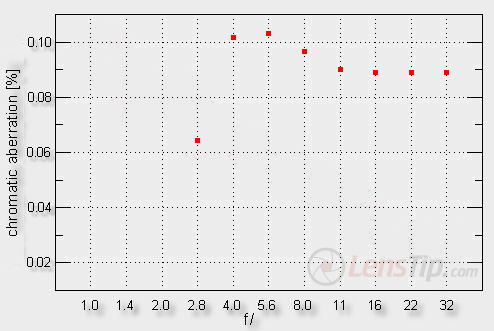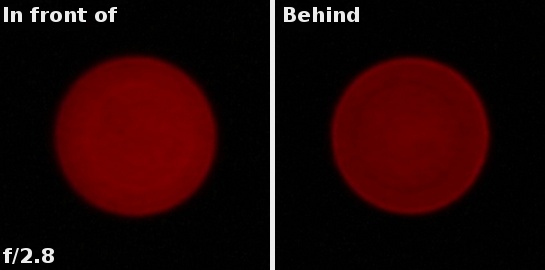Samsung NX 60 mm f/2.8 Macro ED OIS SSA
5. Chromatic and spherical aberration
 |
A bit different results you get when it comes to the lateral chromatic aberration, although still you have nothing to complain about. At the maximum relative aperture the level of this aberration is low but it increases to medium on stopping down. Honestly I’d rather it was higher at the maximum relative aperture and lower for bigger aperture values. A macro lens is stopped down very often and its maximum relative aperture can be used for portrait photos in which the aberration (even much higher) would disappear in the blurred background anyway.
Please Support UsIf you enjoy our reviews and articles, and you want us to continue our work please, support our website by donating through PayPal. The funds are going to be used for paying our editorial team, renting servers, and equipping our testing studio; only that way we will be able to continue providing you interesting content for free. |
- - - - - - - - - - - - - - - - - - - - - - - - - - - - - - - - - - - - - - - - - - - - - - - -

 |
When it comes to the spherical aberration it is not huge. You can notice it looking at the first photo, presented in this chapter, which doesn’t feature any “focus-shift” effect. Fragmentary spherical aberration is still present, though - the photos of a diode, posted below, show it well.

Images in front of and behind the focus are not similar – the first is noticeably lighter in the centre than the second one. Fortunately there are no distinctly lighter or darker concentric stripes than the surrounding area.






